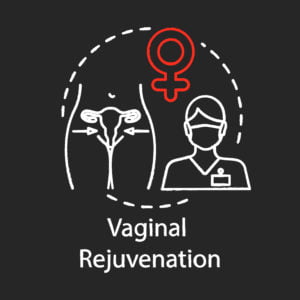The tattoo on the skin has been used for ceremonial purposes for eons. Our modern term, “to mark,” comes from the ancient Tahitian word tattoo. One in four Americans has at least one tattoo, which is likely closer to half among millennials.
Demand for tattoo removal is also rising, reports the American Society for Dermatological Surgery. Reasons to get a tattoo covered up range from wanting to change careers to simply not liking the design anymore.
Removal is much more challenging than an application because professional tattoos use permanent ink granules injected beneath the skin’s surface. For laser tattoo removal to be effective, it must be applied repeatedly.
How Laser Tattoo Removal Works
Tattoos are removed using a laser, emitting a concentrated beam of light that shreds the ink colors. Because it is the only color capable of absorbing all laser wavelengths, black is the simplest to remove. Unfortunately, some lasers can only be used on a limited palette of colors because they are optimized for specific pigments.
A tattoo artist or other trained professional should be consulted first to evaluate the tattoo and give advice. How many sessions you need depends on factors like age, the size of your tattoo, and your ink color. Treatment plans for tattoo removal can be tailored to various factors, such as the patient’s skin tone and the tattoo ink’s depth.
Laser Tattoo Removal Procedure
There is a direct correlation between tattoo size and the number of pulses required for removal. You’ll need laser surgery or laser tattoo removal sessions to get rid of a tattoo for good. Throughout several visits, your tattoo should fade naturally.
Although some discomfort may be experienced during laser tattoo removal, numbing cream is usually unnecessary. A local anesthetic cream may be required to numb the skin around your tattoo.
For more relief after surgery, try placing an ice pack on the area. An antibiotic ointment or cream should be applied after the wound has been cleaned and bandaged. You should also put sunblock on it before going outside.
During a typical session with state-of-the-art laser tattoo removal equipment, the following can be expected to take place:
- Wear the supplied goggles to protect your vision.
- How your skin reacts to the laser will help doctors decide how much power to use during treatment.
- Pressing a handpiece against the skin repeatedly activates the laser light over the tattoo’s surface.
Fewer pulses are needed to remove a smaller tattoo, while a larger one requires more. You’ll need to set aside time and effort if you’re planning on removing a tattoo. The tattoo should fade slightly after each session.
Aftercare
As soon as the procedure is finished, an ice pack will be applied to the affected area for pain relief. Antibiotic cream or ointment for external use will be suggested. A bandage or patch should be used to cover the area for protection.
You can take a shower the following day, but avoid scrubbing the affected area. Wear protective clothing or sunscreen if you must go outside while the treated area is exposed. If you pick at the wound, you increase the likelihood that scar tissue will form.
Why You Need Multiple Sessions
Professional tattoo artists typically apply several thin layers of ink, so eradicating the tattoo takes more than one session. When the ink pigment settles after laser treatment, it can be flushed out of the body. Swelling, blistering, and possibly even a short-term alteration in skin tone are all possible side effects of laser treatment, all of which necessitate a recovery period afterward.
Tattoos also tend to fade over time rather than disappear entirely. There are also tattoo pigments that are too deeply embedded for the lasers currently on the market to eradicate. Different colors may have different levels of removal difficulty. Blue and black tattoos are ideal for laser removal because they absorb light well. Scientists are currently looking into the responses of other colors.
Should You Try Laser Tattoo Removal?
You and your provider can collaborate on a tattoo removal plan. Scarring was inevitable with the few tattoo removal methods available in the past. A lot of people thought the scar looked worse than the tattoo. However, thanks to new innovations, you won’t have to experience these downsides.
A tattoo that has been treated with other methods, but is ineffective, may benefit from laser therapy. Laser therapy for tattoo removal has the potential to be successful if it doesn’t leave too much scarring behind.
Never try to remove your tattoo yourself, mainly if you’ve found a home remedy online. Their uselessness is guaranteed. Your health is at stake, so proceed with caution.
The laser used to remove your tattoo may cause some discomfort. Tattoo removal patients’ levels of discomfort range widely. Several accounts have described a feeling similar to a rubber band snapping against the skin or getting a tattoo.
You might want to ask for anesthesia, like a topical cream or local injection, if the tattoo is going to be placed in a susceptible area or if you have a high pain threshold.
Is Tattoo Removal Safe?
Using a reputable tattoo removal service and recent advancements in laser technology have made tattoo removal less intrusive and more impactful with minimal scarring potential. Due to its lower risk, laser treatment is often preferred over more conventional methods like excision or dermabrasion. Lasers are effective at removing pigments. The excision method involves cutting out the tattoo with a scalpel, which requires anesthesia and raises the risk of scarring. The superficial layers of skin are “sanded” off during a dermabrasion procedure.
Find The Right Provider
Find a reliable provider to guarantee professional treatment. Seek the advice of your primary care physician before selecting a dermatologist or skin surgery center that focuses on tattoo removal.
Most health plans won’t cover the cost of removing a tattoo unless doing so is medically necessary because doing so is a purely aesthetic choice. At tattoo removal clinics or with individual doctors who perform the procedure, payment in full is typically expected on the day of service. It’s wise to sit down with the tattoo artist and negotiate a price for removal before making any final decisions.
If you are considering laser tattoo removal, check our clinic, CMA Primary Care & Medspa, by scheduling an appointment with us. We also offer other primary services that will help you address other concerns you may have.







